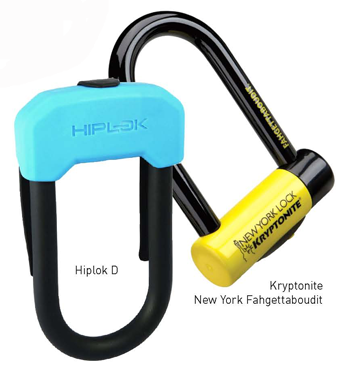Tips and resources
No matter how basic or flash your bike is, there is nothing worse than finding it’s been taken from where you parked it. Here are our tips on deterring would-be bike thieves.
Lock smart
Managing the risk of bike theft has three aspects: avoidance, protection and recovery. None of these aspects can be made failsafe, but all can be managed.
AVOIDANCE
- Avoid leaving your bike locked up outside overnight, especially at uni campuses, train stations and on inner-city streets.
- Choose parking spots that are as public and visible as possible. Don’t be tempted to leave your bike unlocked, even briefly while you duck into a shop.
- A lot of crime is opportunistic and the time it takes to lock up far outweighs the hassle of replacing a bike.
- Sign up for a secure shared bike parking cage at a train station, such as Parkiteer in Victoria or the bike shelters on the TransPerth network using SmartRider. A few of these are popping up in Sydney as well.
PROTECTION
- Have a lock that is appropriate for the level of risk of the parking situation. Think about people traffic, visibility, time of day, length of time, other bikes etc.
- Lock the frame of your bike to an immoveable object. Don’t lock by the wheels only because they are quite easy to take off and then the thief can take the rest of the bike away.
- Make sure the lock is tight on the bike, making it harder to break. Bicycle Network recommends using a good quality D-Lock.
- Remove valuable components such as lights.
- Photograph identifying features of your bike to prove that it’s yours. Record its serial number.
- Register your bike with Stolen Bikes Australia. Websites such as this routinely check your details against bike recovered by the authorities and suspected stolen bikes listed on used bike marketplaces such as eBay and Gumtree.
RECOVERY
- Sadly, finding a bike once it’s stolen is not very likely. Police believe the bicycles are stolen and then sold on the street for a tenth of their retail value, as well as through online classified websites i.e. eBay, Gumtree etc. Other bicycles may also be stripped and the parts disposed of online etc.
- However, having photographs and a record of the serial number maximises your chances of finding the bike and identifying it.
D-locks offer the best form of protection from theft
While bike theft is difficult to combat, you can reduce the chances by securing your bike with a good quality d-lock. D-locks offer the best protection as they are secure, virtually unbreakable and simple to use.
Cost is an excellent indicator of quality when it comes to a good bike lock. Our advice is to buy the best d-lock you can afford.
Look for locks that are made from double, or triple heated, hardened steel which will offer a deterrent for opportunistic bike thieves.
You may also want to consider combining a secure D-lock with an additional sturdy chain or reinforced cable lock for the wheels.

How to lock your bike to a hoop
The best way to protect your bike from being stolen is to use high quality locks. Bicycle Network recommends this whether your bike is left in a public place, or even on your porch at home. We know it’s not always convenient to carry two locks, but if you are able to we do it recommend it, so have included instructions on how to use two locks.
This instructional video shows you how to safely lock up your bike to a freestanding hoop in a public place. It has been filmed at a railway station because they are one of the most common places for bike theft.
For the most secure option at railway stations, we recommend using a Parkiteer cage if there is one available.
Become our friend
Find out more about Bicycle Network and support us in making it easier for people to ride bikes.

